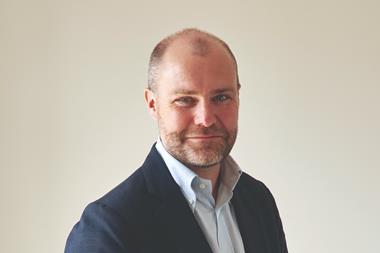A fundamental shift in the very concept of the ‘traditional office’ is taking place as businesses navigate hybrid working.

Employers want the office to be an attractive workspace that employees look forward to working in and clients look forward to visiting. This means creating lifestyle-focused spaces that meet the expectations of an increasingly diverse workforce that is evenly split between the office and home.
At WorkPad, we have seen a step change in the type of high-end office spaces that companies wish to create. There is a clear shift away from ‘functional’ spaces and a move to more ‘lifestyle-led’ designs, with a greater focus on high-quality, bespoke furnishings and décor.
The location of the office remains the number-one priority of businesses that want a presence in prime central London. These spaces need to be not only well-connected with a wide range of amenities within walking distance, but also comfortable, accommodating and creatively stimulating.
A templated space within a shiny, new development is not the attraction it once was, as it often lacks the qualities that are required to inspire and motivate the post-pandemic workforce. We are seeing a growing number of businesses looking for high-end, bespoke office spaces in buildings that have lots of history and character and period features such as fireplaces and large, open entrance halls.
Bespoke designs
In recent months, we have helped a range of clients – from fashion houses to creative agencies – to construct bespoke head-office designs that blend elaborate furnishings into these historic spaces through tailored lounges, dining rooms and courtyard gardens. For example, we recently helped clients source unique pieces of furniture and artwork from across the world, including a piece of art from Sotheby’s auction house and a unique collection of armchairs from Los Angeles.

Business leaders are beginning to recognise that it is far more sustainable, responsible and, in many cases, more cost-effective to repurpose a historic listed building than it is to demolish it and start again. Additionally, being based in areas of central London that are full of characterful buildings undergoing significant renewal and regeneration, such as Soho or Mayfair, has the added benefit of supporting local businesses and enterprise.
These areas have become hives of activity again due to the growing demand for this type of bespoke workspace. As a result, local businesses such as coffee shops, restaurants and dry cleaners are growing rapidly due to the regular revenue that office workers bring.
Our premises across central London are currently running at more than 95% occupancy – an increase from circa 75% occupancy during the first year of the pandemic – as we adapt to the evolving needs of occupiers, landlords, business leaders and workforces.
Creating a unique and high-end office space is possible on a smaller budget. Seek locations that are well-connected but less popular than their neighbouring counterparts. Choose furnishings that are high-quality and long-lasting, so you are not replacing pieces every couple of years. Purchase prints instead of original art pieces, and source accessories from community groups or designer outlets where you can find quality pieces at discounted prices.
Edward Griffin is chief executive of WorkPad




























No comments yet